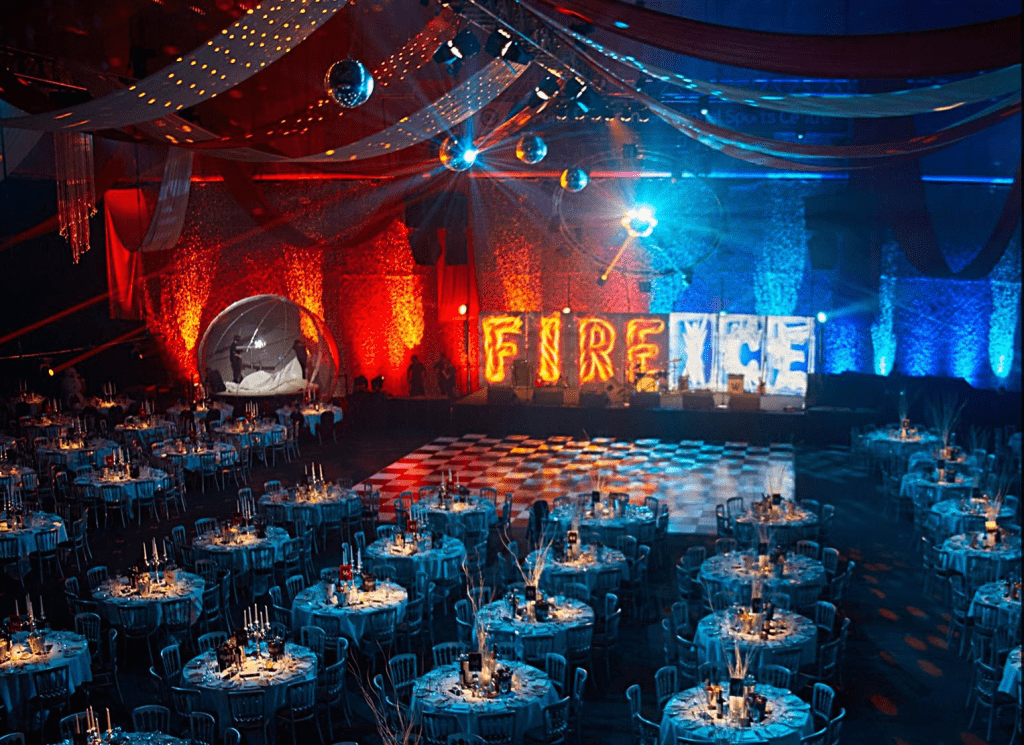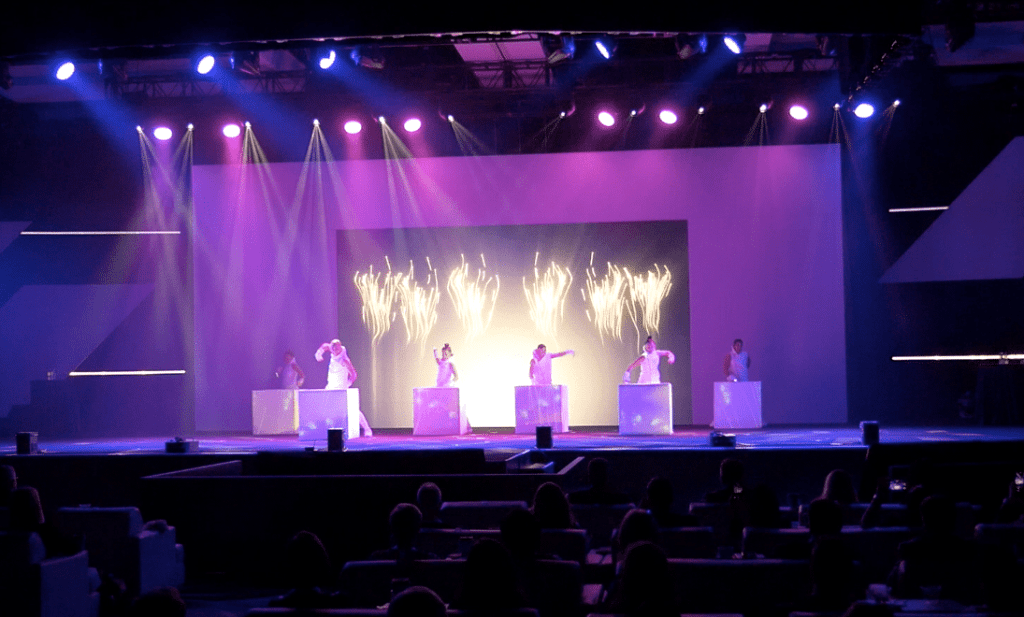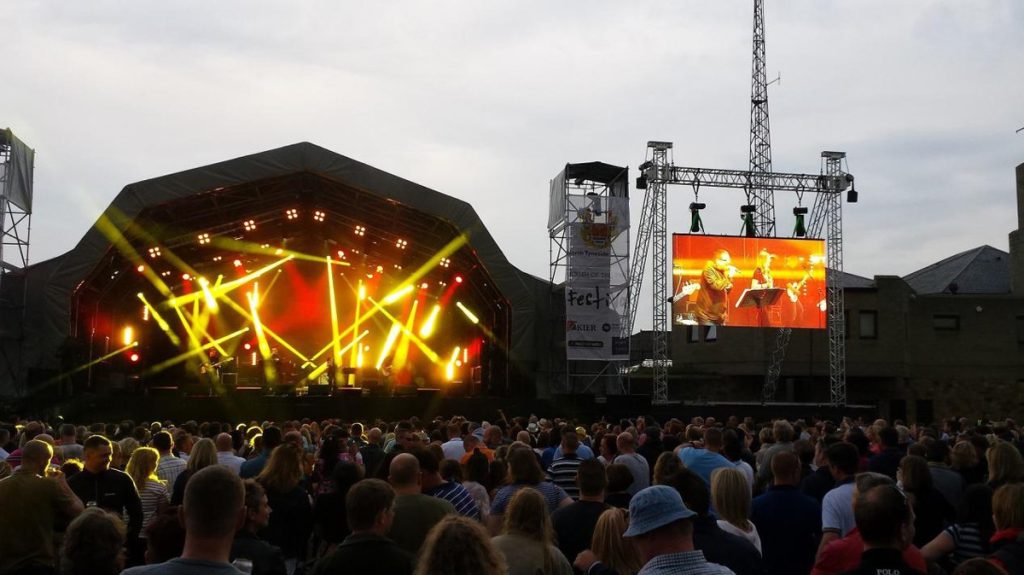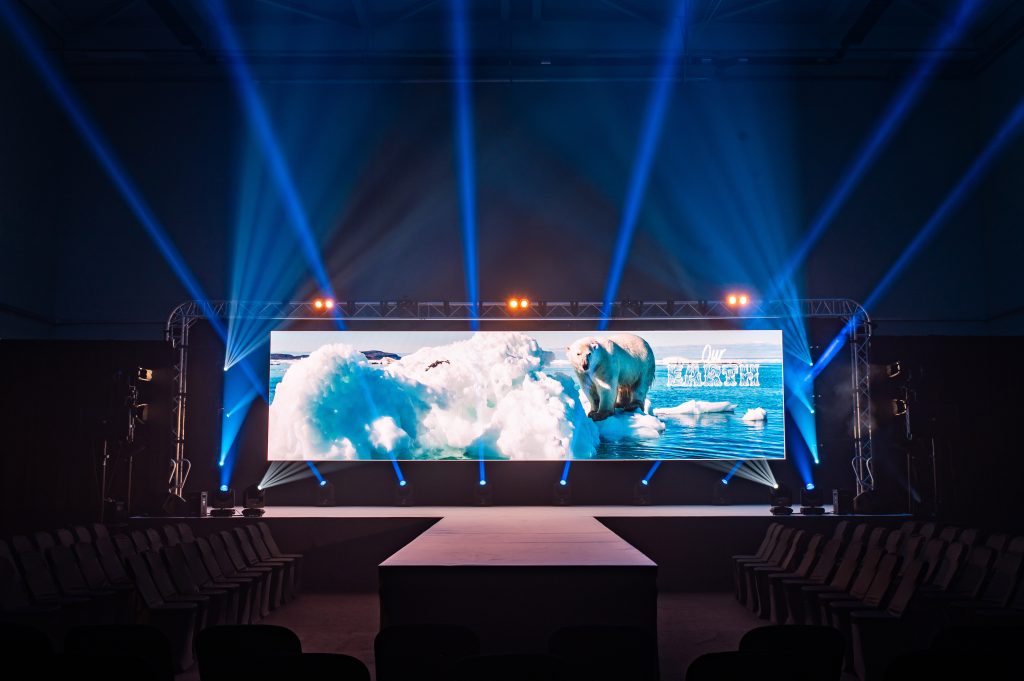Understanding Stage Lighting Techniques
Stage theatre lighting is a crucial aspect of any production, creating atmosphere, directing attention, and enhancing the storytelling. Two foundational techniques are widely employed by lighting designers to achieve these effects: The McCandless Method and The High Sides Method. Each has its unique approach to illuminating the stage and performers.
Pastiche excels in implementing these and other advanced lighting techniques. Our expert team has extensive experience in designing and executing lighting schemes that perfectly capture the essence of your production. We ensure your stage lighting enhances every performance, creating a captivating visual experience for your audience.
The McCandless Method
The McCandless Method, named after lighting design pioneer Stanley McCandless, is a technique that relies on two lights positioned at 45-degree angles from the performer, one from the front and one from the back. This method is designed to provide even lighting and minimise shadows, which is essential for clear visibility and mood setting on stage.
The key components of the McCandless Method include:
- Key Light: The primary source of light, usually positioned at a 45-degree angle to the side of the performer and 45 degrees above the horizon.
- Fill Light: Complements the key light by filling in shadows, positioned opposite the key light at an equal angle.
The combination of these lights ensures the performer is well-lit from all sides, which enhances their visibility and the overall aesthetic of the scene. This technique is particularly effective in highlighting the facial features and expressions of the performers, which are crucial for audience engagement.
The High Sides Method
The High Sides Method focuses on side lighting from an elevated position to accentuate the performers’ physical dimensions and movements. This approach is beneficial for creating depth and highlighting textures, making it a popular choice for dance performances and dynamic scenes.
Key attributes of the High Sides Method include:
- Elevation: Lights are placed above the head height of the performers to cast downward shadows, emphasising their form and movement.
- Angle: The lights are directed towards the stage at a steep angle to illuminate the performers’ sides, which accentuates their shape and movements.
Side lighting is particularly effective at revealing the contours of the performers’ bodies and can be used to create dramatic effects, especially when combined with front lighting. It can emphasise the mid-chest, shoulders, and feet of performers, which is crucial for visual storytelling through dance and movement.
Implementing these stage lighting techniques requires a deep understanding of the production’s needs and the careful selection of audio visual equipment. The choice between the McCandless Method and the High Sides Method—or a combination of both—depends on the desired visual impact and the nature of the performance. Lighting designers must consider each stage direction and body position to ensure that the lighting enhances the performance, regardless of where the action takes place on stage.
For anyone involved in sourcing stage theatre lighting, it is important to work with knowledgeable audio visual suppliers who can provide the right equipment and expertise to execute these techniques effectively. Understanding these methods is just the starting point in creating an immersive and visually captivating stage environment, as explored further in the sections on stage and lighting essentials and design principles.

Essential Stage Lighting Equipment
A comprehensive selection of lighting equipment is vital for any stage production. It enhances the aesthetic, supports the story, and ensures that performers are seen clearly. Below are some fundamental fixtures used in stage theatre lighting.
Pastiche provides a wide array of these essential tools, ensuring your production has access to the best in modern lighting technology. Our expertise and extensive inventory allow us to support any production, helping to realise your artistic vision and make each performance unforgettable.
Ellipsoidal Lights
Ellipsoidal lights, also known as Lekos, are a staple in stage lighting for their versatility and precision. They are particularly ideal for front lighting, where clear visibility of the performers is paramount. These fixtures are capable of holding gobos and gels, allowing designers to project patterns or splash colours onto the stage, and they are known for maintaining a sharp focus which helps to prevent light from bleeding into areas where it’s not wanted.
| Feature | Benefit |
| Sharp focus | Prevents light spill |
| Gobo and gel compatibility | Enables pattern and colour projection |
| Adjustable beam size | Offers flexible lighting design |
Followspots
Followspots are powerful, concentrated beams of light that can be adjusted manually, providing extra focus on performers as they move across the stage. Operators can control the positioning, size, intensity, and colour of the beam in real-time, which is essential for highlighting key moments in a performance.
| Feature | Benefit |
| Manual operation | Allows real-time performer tracking |
| Adjustable beam | Enhances performer visibility |
| Intensity control | Adapts to different scenes |
PAR Cans
PAR Cans are the workhorses of stage lighting. These cylindrical, sealed-beam lamps are similar to vehicle headlights and are used to flood the stage with light. While they lack the focusing precision of other fixtures, they are capable of producing intense beams of light and can be fitted with gels to change the colour.
| Feature | Benefit |
| Intense light | Ensures stage visibility |
| Gel compatibility | Allows colour changes |
| Beam shaping | Creates dramatic effects |
Cyc Lights
Cyc lights are designed to provide a wash of light over large backdrops or vertical surfaces. By placing these open-faced fixtures on the floor or hanging them close to the backdrop, they create an even light distribution that can transform the mood and setting of a scene.
| Feature | Benefit |
| Even light distribution | Creates backdrop illumination |
| Versatile placement | Offers design flexibility |
| Large area coverage | Enhances backdrop aesthetics |
Choosing the right audio visual equipment hire is crucial for any production. Whether you are an audio visual supplier or a lighting designer, understanding these essential lighting instruments and their capabilities will help you create memorable and effective stage productions.

Principles of Stage Lighting Design
The artistry of stage theatre lighting lies in its ability to transform a performance space into a visual narrative. Mastering the principles of stage lighting design is essential for any lighting designer aspiring to create an immersive and emotionally engaging theatrical experience.
Pastiche can assist in applying these principles effectively, leveraging our team’s extensive knowledge to elevate your production. Whether enhancing mood, focusing attention, or shaping the audience’s experience, our experts are here to help bring your creative vision to life.
Dividing the Stage for Lighting Control
One of the first steps in stage lighting design is dividing the stage into distinct areas that allow for independent lighting control. This segmentation enables designers to apply variations in colour, intensity, and texture to specific parts of the stage as needed. By considering factors such as the directional focus and colour variations required in each area, designers can plan an effective lighting scheme that enhances the storytelling of the production. For those looking for audio visual equipment hire, understanding this principle is crucial when selecting the right equipment for a stage production.
Importance of Color in Lighting
Colour is a powerful tool in lighting design, with the ability to evoke a spectrum of emotions from the audience. Different hues can convey warmth, danger, tranquillity, or coldness, setting the scene and mood effectively. Lighting designers leverage these universal emotional responses to colour, using them strategically to unify the audience’s experience and underscore the narrative of the performance. Knowledge of these emotional connections to colour is invaluable for audio visual suppliers and those in the stage and lighting industry.
Colour Mixing in Stage Lighting
The creation of colour schemes in stage lighting relies heavily on colour mixing theories. Additive colour mixing, which involves combining the three primary colours of light (red, blue, green), is essential for crafting an extensive range of hues. By varying the intensity of these primary colours, lighting designers can produce a full spectrum of colours, thereby enhancing the visual appeal and emotional impact of a performance.
Conversely, subtractive colour mixing uses filters to shape white light into new colours. By applying cyan, magenta, and yellow (CMY) filters, specific wavelengths of light are absorbed, leaving only the desired colours to be projected onto the stage. This technique is particularly common in non-LED lights and allows for a different approach to creating colour options within a performance space.
Moreover, colour temperature, measured in Kelvin, plays a significant role in the emotional ambiance of a production. Cooler temperatures may create a sense of detachment or sadness, while warmer temperatures can evoke happiness or excitement. By manipulating colour temperature, lighting designers have the ability to subtly influence the mood of a scene and enhance the audience’s overall theatrical experience.
Understanding and applying these principles of stage lighting design is crucial for anyone involved in crafting the visual aspects of a theatrical production. Whether you are a lighting designer, an audio visual equipment hire company, or a theatre enthusiast, grasping the intricacies of lighting can elevate the impact of any stage presentation.

Creating Impactful Lighting Schemes
Designing an impactful lighting scheme for stage theatre is a critical aspect of any performance. It not only highlights the actors and sets but also plays a pivotal role in conveying the emotional undertone of a piece.
Pastiche excels in crafting lighting designs that effectively enhance both the visual and emotional aspects of a performance. Our experienced team collaborates closely with your team to ensure that every lighting detail aligns with your creative goals, making each moment on stage resonate with your audience.
Emotional Responses to Colours
Colours have the power to evoke specific emotional responses from the audience, and understanding these associations is key in stage lighting design. For instance, blue can create a sense of calm or sadness, while red might represent passion or danger. By carefully choosing colours, lighting designers can enhance the narrative of a performance and control the atmosphere within the space. Illuminated Integration highlights the importance of aligning colour choices with the intended emotional impact on the audience. This knowledge is indispensable for audio visual suppliers and those involved in stage and lighting to create an immersive experience.
Managing Lighting Cues
Lighting cues are integral to the seamless execution of a stage performance, serving as the backbone for the visual storytelling that accompanies the narrative. This section will delve into the role of lighting cues in performances and the creation of effective cue sheets.
Pastiche specialises in managing lighting cues with precision and expertise. Our team ensures that every cue is perfectly timed and executed, enhancing the overall impact of your production. Trust Pastiche to provide meticulous cue management that brings your performance to life with flawless visual storytelling.
Role of Lighting Cues in Performances
Lighting cues serve as visual indicators for performers to execute specific actions at precise times, ensuring the smooth progression of a stage performance. These cues are generally managed by a lighting technician or stage manager, who utilises programmed technology like monitors and headsets to integrate cues into the theatre setup seamlessly. The meticulous timing of lighting cues enhances the audience’s experience by guiding their focus and amplifying the emotional impact of the scene.
In addition to supporting performers, lighting cues are pivotal for the technical team. They synchronise the lighting changes with the action on stage, cueing everything from spotlight focus to dramatic colour shifts. As such, lighting cues are an indispensable aspect of stage theatre lighting, dictating the rhythm and mood of the performance.
Creating Effective Cue Sheets
A lighting cue sheet is a detailed document that outlines all the lighting effects needed to support the storytelling of a production. With advancements in lighting technology, cue lists can now be pre-programmed or manually triggered during performances, depending on the theatre’s resources.
To ensure that cue sheets are effective, they should be designed with the following considerations:
- Clarity: The cue sheets should be straightforward, using a large font, sans-serif style, and black text on a white background for easy readability under stage lighting conditions.
- Detail: Include precise details for each cue, such as timing, lighting changes, and any corresponding stage actions.
- Simplicity: Keep the language simple and clear to allow technicians to quickly understand and execute each cue.
- Organisation: Categorize cues logically, often in the order of appearance within the performance.
Here is an example of how the information on a cue sheet might be organised:
| Cue Number | Page Number | Cue Action | Duration | Notes |
| 1 | 5 | Spotlight on Lead | 5 sec | Slow fade in |
| 2 | 8 | Blue wash over stage | 3 sec | Coincides with music cue |
| … | … | … | … | … |
For those looking to hire audio visual equipment or collaborate with audio visual suppliers, understanding how to create and manage cue sheets is essential. It allows for better communication and execution of the lighting design, ultimately elevating the overall production quality.
A well-crafted cue sheet is a blueprint for the lighting team, enabling them to deliver precise and impactful lighting that complements the narrative. By practising cues in order, researching best practices, and utilising repeat cues where possible, a lighting designer can improve the stage lighting for a seamless and professional production. For more insights into managing lighting cues and other stage and lighting equipment and techniques, explore our comprehensive guides and resources.

Evolution of Technology in Stage Lighting
The technology behind stage theatre lighting has undergone a significant transformation over the centuries, evolving from the rudimentary use of natural light to sophisticated digital systems that offer precision and versatility.
Historical Evolution of Stage Lighting
The journey of stage lighting began with the use of natural sunlight in ancient Greek theatres, where large mirrors were employed to reflect sunlight during performances (Eaton). As theatre progressed, the need for performances outside daylight hours brought about new innovations. In the 19th century, limelight—a form of stage lighting which used a combination of heated lime and a lens to focus light—was introduced. This method provided a more controllable light source, laying the groundwork for modern lighting techniques.
The advent of electrical lighting in the 20th century revolutionised the industry, offering safer and more reliable illumination for the stage. Theatres gradually transitioned from gas and limelight to electric lights, which allowed for greater control over the brightness and direction of light.
Modern Advancements in Stage Lighting Technology
In recent years, digital lighting boards have become the standard in theatre lighting, giving lighting designers the ability to control hundreds of lights with the push of a button. The introduction of LED lights has further transformed stage theatre lighting by providing a wider spectrum of colours and higher energy efficiency.
| Advancement | Impact |
| Digital Light Boards | Precise control over complex lighting systems |
| LED Lights | Energy-efficient, vibrant colour options |
| Wireless Microphones | Improved sound quality, performer mobility |
| Speaker Systems | Centralised sound effects, immersive experiences |
| Automation & Rigging | Smooth transitions, safe and impressive set movements |
The sound design has also greatly benefited from technological advancements. The use of wireless microphones has enhanced sound quality and freed performers from the constraints of cables. Modern speaker systems allow for centralised control of music and sound effects, creating a more immersive experience for the audience.
In visual stage design, automation and rigging systems have allowed for the seamless movement of set pieces, contributing to smooth transitions and dynamic performances. Motorised stage rigging now performs tasks that once required manual labour, ensuring safety and efficiency.
The evolution of stage theatre lighting and related technologies continues to shape the way performances are produced and experienced. As the industry moves forward, the integration of new technologies promises to further expand the creative possibilities for audio visual equipment hire, audio visual suppliers, and stage and lighting professionals, offering audiences increasingly sophisticated and engaging theatrical experiences.
Pastiche remains at the forefront of this evolution, providing cutting-edge AV solutions and expert services. By partnering with us, you ensure that your events benefit from the latest advancements in technology, creating unforgettable experiences for your audience.
2 responses to “Top Tips for Effective Stage Theatre Lighting Design”